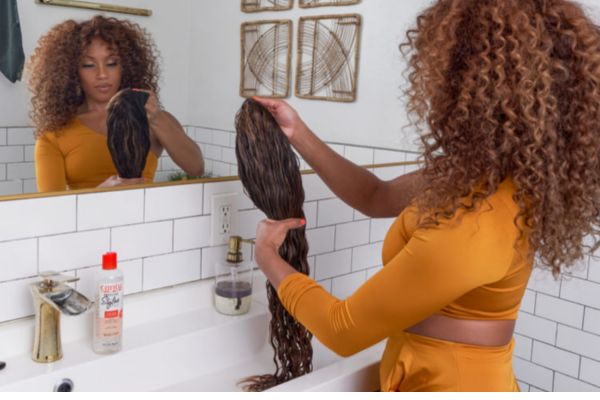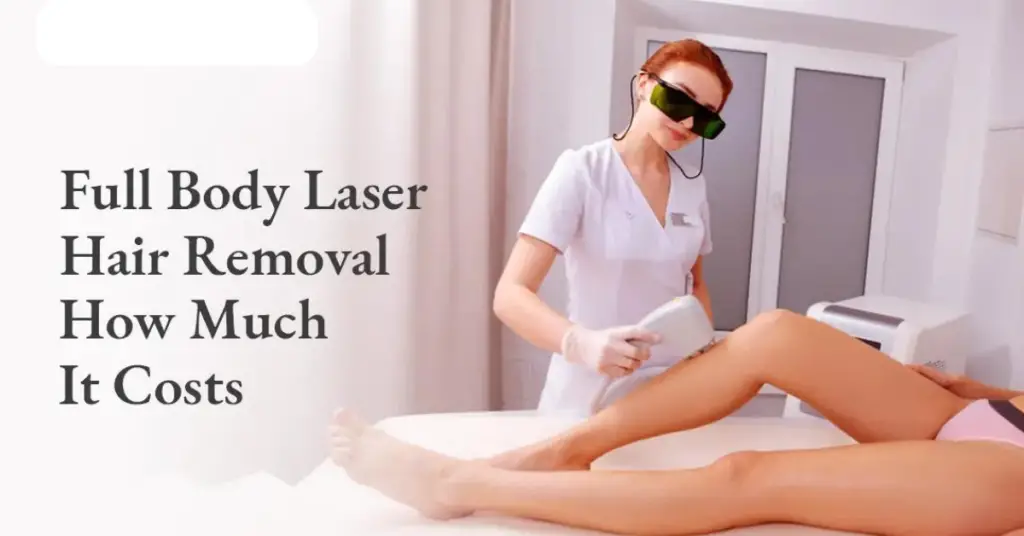Hair is often considered a crowning glory, and maintaining its health is a top priority for many. One way to ensure your hair stays healthy and beautiful is by incorporating protective styles into your routine. Protective styles not only safeguard your hair from environmental damage and manipulation but also promote growth and retention. In this article, we’ll explore various protective styles that can help you achieve and maintain optimal hair health.
What are Protective Styles?
Protective styles are hairstyles that help protect the ends of your hair, minimizing damage and promoting hair health. These styles typically involve tucking the ends of your hair away and can be achieved with braids, twists, buns, or updos.
One of the main benefits of protective styles is that they reduce the manipulation and friction that can lead to breakage and damage. By keeping your hair tucked away, you can also retain moisture better, which is essential for hair health.
When choosing a protective style, it’s important to consider your hair type and texture. Some styles may be more suitable for certain hair types than others. Additionally, it’s important to avoid styles that are too tight or pulling on your scalp, as this can lead to hair loss and damage.
Examples of protective styles include box braids, cornrows, twists, buns, and wigs. These styles can be worn for several weeks at a time, providing a break from daily styling and manipulation.
Benefits of Protective Styles
Retain Length and Moisture
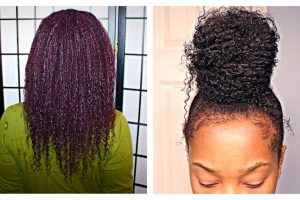
Protective styles help to keep your hair ends tucked away, reducing the risk of split ends and breakage. This can lead to longer, healthier hair over time.
Protection from Environmental Damage
By keeping your hair in a protective style, you can minimize exposure to environmental factors like sun, wind, and pollution, which can damage your hair.
Reduced Manipulation and Breakage
Manipulating your hair frequently, especially with heat styling or tight hairstyles, can lead to breakage. Protective styles reduce the need for daily styling, minimizing damage.
Versatility and Style
Protective styles offer a wide range of options, from braids to twists to buns, allowing you to experiment with different looks without compromising your hair’s health.
Low Maintenance
Once you have a protective style in place, it requires minimal daily maintenance, saving you time and effort in your hair care routine.
How to Choose the Right Protective Style
Choosing the right protective style for your hair type and lifestyle is crucial for maintaining healthy hair. Here are some tips to help you make the best choice:
Consider Your Hair Type
Different protective styles work better for certain hair types. For example, braids are great for curly hair, while twists may be better for straight hair. Consider what styles will work best with your natural texture.
Think About Your Lifestyle
Choose a style that fits your lifestyle. If you’re active or don’t have much time for styling, opt for a low-maintenance style that can last for several weeks.
Consult with a Stylist
If you’re unsure about which protective style to choose, consider consulting with a stylist who specializes in natural hair. They can recommend styles that will work best for your hair type and desired look.
Consider the Health of Your Hair
If your hair is damaged or prone to breakage, choose a style that will protect your ends and minimize manipulation. Styles that keep your ends tucked away, such as buns or twists, are ideal for promoting hair health.
Experiment with Different Styles
Don’t be afraid to try out different protective styles to see what works best for you. It may take some trial and error to find the perfect style that protects your hair and suits your lifestyle.
Types of Protective Styles
Braided Hairstyles
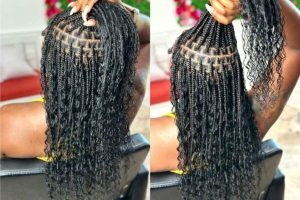
Braids are a timeless protective style that can help protect your hair from breakage and damage. Styles like box braids, cornrows, and twists can keep your hair protected while also allowing for versatile and stylish looks.
Twists
Twists are another popular protective style that can help protect your hair from environmental damage and manipulation. Two-strand twists and flat twists are great options that can be styled in various ways to suit your preference.
Buns and Updos
Wearing your hair in buns or updos can also be a protective style, as it keeps your ends tucked away and reduces the risk of breakage. There are many stylish bun and updo options to choose from that can help protect your hair while still looking chic.
Wigs and Extensions
Wearing wigs or extensions can be a protective style, as it allows your natural hair to rest and grow without being constantly manipulated. Just make sure to choose high-quality wigs and extensions that won’t damage your natural hair.
Head Wraps and Scarves
Head Wraps and scarves are not only stylish accessories but also great protective styles. They can help protect your hair from environmental damage and keep it moisturized.
Locs
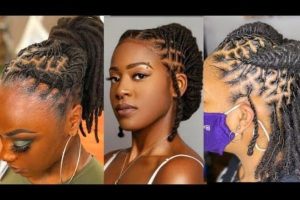
Locs are a natural protective style that can help protect your hair from breakage and damage. There are various types of locs, such as traditional locs and faux locs, that can be styled in different ways to suit your preference.
These are just a few examples of protective styles that can help protect your hair and promote its health. Experiment with different styles to find what works best for you and your hair type.
Maintaining Protective Style
Maintaining your protective style is essential for keeping your hair healthy and ensuring that your style lasts as long as possible. Here are some tips for maintaining your protective style:
Moisturize Regularly
Even though your hair is tucked away, it’s still important to moisturize your hair and scalp. Use a lightweight moisturizer or hair oil to keep your hair hydrated.
Wash Your Scalp
While you don’t need to wash your hair as often with a protective style, it’s still important to wash your scalp regularly to remove dirt and buildup. Use a gentle shampoo or a cleansing spray to cleanse your scalp without disturbing your style.
Protect Your Hair at Night
Wear a satin or silk scarf or bonnet to protect your hair while you sleep. This will help prevent frizz and breakage.
Avoid Heat Styling
Avoid using heat styling tools on your hair while it’s in a protective style. Heat can cause damage and breakage, so it’s best to let your hair air dry and style it without heat.
Limit Manipulation
Try not to manipulate your hair too much while it’s in a protective style. Excessive touching or styling can lead to breakage and damage.
Remove Style Carefully
When it’s time to remove your protective style, do so gently to avoid pulling or tugging on your hair. Use a moisturizing conditioner to help detangle your hair before removing the style.
Conclusion
Incorporating protective styles into your hair care routine can significantly improve the health and appearance of your hair. These styles not only protect your hair from damage but also promote growth and retention. Whether you opt for braided styles, twists, buns, or wigs, maintaining these styles is key to reaping their benefits.
By following the tips outlined in this article, you can ensure that your protective style remains fresh and effective. Remember to keep your scalp clean and moisturized, avoid over-manipulation, and protect your hair at night. Additionally, regular trims and protection from the elements can further enhance the health of your hair.
Experiment with different protective styles to find what works best for you and your hair type. With proper care and maintenance, you can enjoy healthy, beautiful hair year-round.
Read more about hair heath and hair growth in the following articles below
Unlock Healthy Hair: The Power of Hair Growth Conditioners
Unlock Healthy Hair: The Power of Hair Growth Shampoos

